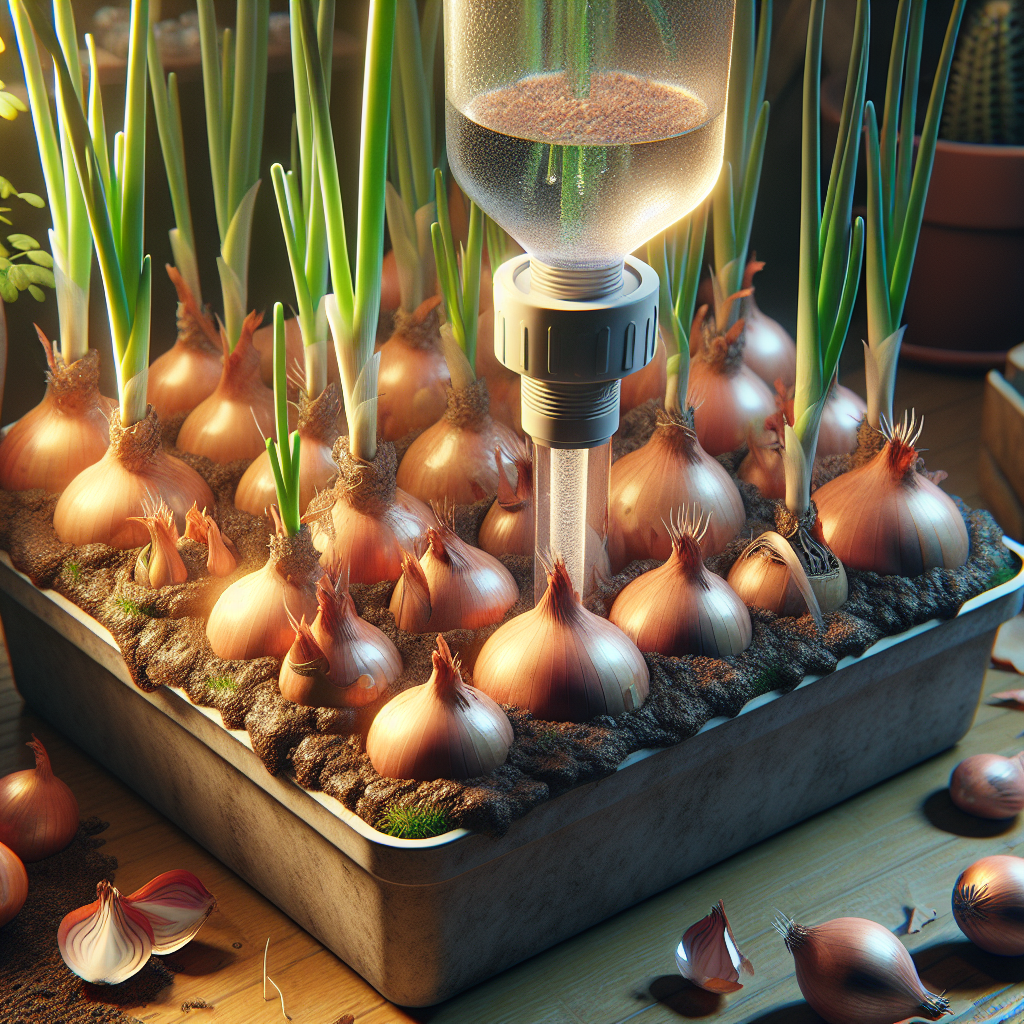Container Gardening Hack: Cultivating Onions with a Slow Drip System
Container gardening has become increasingly popular among urban dwellers and those with limited outdoor space. It offers a convenient way to grow plants, herbs, and vegetables without the need for a traditional garden plot. While many vegetables can be successfully grown in containers, onions are often overlooked due to their lengthy growing period and specific cultivation requirements. However, with the help of a slow drip system, cultivating onions in containers becomes both feasible and rewarding.
Onions are a versatile kitchen staple that adds flavor and depth to countless dishes. They come in various varieties, each with distinct flavor profiles and culinary uses. Growing your own onions ensures access to fresh produce while avoiding harmful pesticides commonly used in commercially grown ones.
Before we delve into the process of cultivating onions using a slow drip system, it is essential to understand why this method works so well for this particular vegetable. Onions require consistent moisture but also demand good drainage to prevent root rot or bulb rotting. Conversely, inconsistent watering can lead to deformed bulbs or bolting (premature flowering). A slow drip system offers optimal conditions by supplying water directly to the root zone at a slow and steady pace.
Here’s how you can get started with cultivating onions in containers using a slow drip system:
1. Choose the right container: Select a container that is at least 12 inches deep to accommodate onion bulb development properly. The container should also have drainage holes at the bottom to prevent waterlogging.
2. Pick the appropriate onion variety: Opt for short-day onion varieties if you live in an area where winters are mild and summers are hot. Long-day varieties thrive in regions where summers are milder.
3. Prepare high-quality soil mix: Onions thrive in loose, well-draining soil with plenty of organic matter mixed in. Prepare a soil mix by combining equal parts potting soil, compost, and sand to ensure adequate drainage and nutrient availability.
4. Start with seeds or sets: Onions can be grown from seeds or sets (small bulbs). Seeds offer more variety options, while sets are easier to start with. If using seeds, sow them around 8-10 weeks before your region’s typical planting date.
5. Planting onions: If using sets, plant them about an inch deep and four inches apart in the container. For seeds, scatter them evenly over the soil surface and lightly cover with a layer of soil mix.
6. Slow drip irrigation setup: Set up a slow drip irrigation system by attaching a drip emitter or tubing with small holes near the base of the container. This allows water to be delivered directly to the root zone while minimizing water wastage.
7. Mulching and maintenance: Apply a layer of organic mulch like straw or wood chips around the onion plants to conserve moisture and suppress weed growth. Ensure that the soil remains consistently moist but not saturated.
8. Fertilization: Onions are heavy feeders and benefit from regular fertilization. Use a balanced organic fertilizer once every two weeks during active growth.
9. Harvesting: Onions are ready for harvest when the tops begin to yellow and flop over naturally. Gently dig them out using a garden fork, allowing them to cure for a week or two in a well-ventilated area before storage.
Cultivating onions with a slow drip system offers several advantages over traditional methods:
1. Water conservation: The slow drip system significantly reduces water wastage compared to overhead watering or manual watering methods.
2. Disease prevention: By delivering water directly to the root zone, foliage diseases like fungal infections are minimized since leaves remain dry, reducing the risk of infection.
3. Enhanced bulb development: Consistent moisture provided by the slow drip system promotes uniform bulb development without fluctuations in moisture levels that may lead to deformities.
4. Less maintenance: Once the slow drip system is set up, it requires minimal manual intervention, allowing you to spend less time watering and more time enjoying your garden.
5. Space optimization: Container gardening with a slow drip system enables you to grow onions even in limited spaces like balconies or rooftops, maximizing your urban gardening potential.
In conclusion, cultivating onions in containers using a slow drip system offers an ideal solution for those with limited gardening space. By providing consistent moisture and preventing water-related issues, this hack ensures successful onion cultivation. With careful selection of container size, proper soil mix preparation, and the right watering technique, anyone can enjoy the rewarding experience of growing their own fresh onions. So why not give this container gardening hack a try and savor the joy of harvesting homegrown onions all year round?













